
Satin, lace and a 4 a.m. finish
Satin and lace can be very scary materials to work with when you’re used to 100 percent quilting cotton, but I found that they really weren’t all that bad. The scariest part was whether or not I’d finish in time for my daughter’s baptism, not if the fabric would behave like a soaking wet kid on a slip-n-slide.
True to form, I finished this baptism gown at 4 a.m. on the day of Angela’s baptism after being up for 20 straight hours and cooking lunch for a dozen family members and three dozen cupcakes for the entire congregation. Well, technically I finished the gown at 2:30 a.m. and then decided I had to have a bonnet too. Sewing that late into the evening I’m lucky all the sleeves were on with the right sides out when we got to church.
I picked up the fabric and notions during a trip to the Vogue Fabric Store in Chicago in earlier this fall. There were so many goodies there I really had to exercise extreme amounts of will power to just buy materials for the baptism gown, and one small remnant I’ll make a spring coat from for Angela for next year.
The gown features a white bridal satin under layer and lining, with a scalloped edge lace overlay. All the seams are finished with the French seam technique to avoid any raw edges causing problems on the inside of the dress.The technique sounds a lot fancier than it actually is. It’s one of my favorite seam treatments for garments and pillowcases because it looks very polished and you don’t need a serger.
I absolutely love how the gown turned out and am going to have it cleaned and preserved so she can use it for her children someday.
Besides only giving myself one week to make the gown while working full time, I didn’t really find the fabric or the pattern too challenging to make. The pattern is McCalls M6221, View C. But I do have some pointers for working with satin and lace if you too want to make a baptism gown for a little one.
Get the right tools
My quilting needs and pins weren’t going to cut it for this project. I bought special ball point needles and pins designed to work with bridal satin. The heavier the satin, the larger the needle size you need. I used a medium-sized ballpoint needle, but I could have gotten away with a large for the weight of fabric I used.
Don’t be cheap when buying fabric
This is not the time to go for the red tag clearance fabric. Higher quality satin is easier to work with and a must have when you are working with satin for the first time. If you’re worried you’ll make a mistake with your nice, expensive material, then practice making your garment with muslin first. Then you can make any adjustments for fit and learn the best way to construct it on fabric that doesn’t matter first.
Pin, pin and then pin some more
Buying high quality satin will make it easier to work with and less slippery, but pinning frequently and often is the key to making sure your fabric ends up where you want it and you won’t have to rip out your work and start over again. Do try to pin just in the seam line to minimize the chances of needle holes showing up in your final work.
Moisturize and drink lots of water
I know, this sounds like strange advice for sewing, but working with satin with dry hands can make the fabric hard to maneuver and can actually damage it if your skin is too rough. Drinking lots of water and applying lotion often will help keep your fingers nice and smooth so rough patches don’t catch on the fabric. Do be careful to make sure your hands aren’t greasy from the lotion or you could leave marks on the fabric. I used Udderly Smooth cream, which I bought at Hancock Fabrics. It helps keep my hands smooth and doesn’t leave residue on the fabric.
Baste everything
When you are working with satin and a lace overlay, baste the two fabrics together and treat them as one layer as much as possible to ensure both layers behave similarly during the construction process. One note on this. I had to be particuarly careful with my tension when basting layers together to prevent gathering. Keep an eye out for this when you’re sewing.







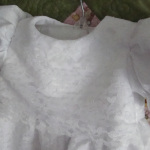
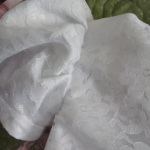

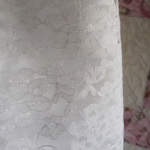


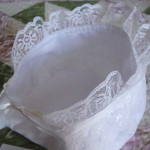










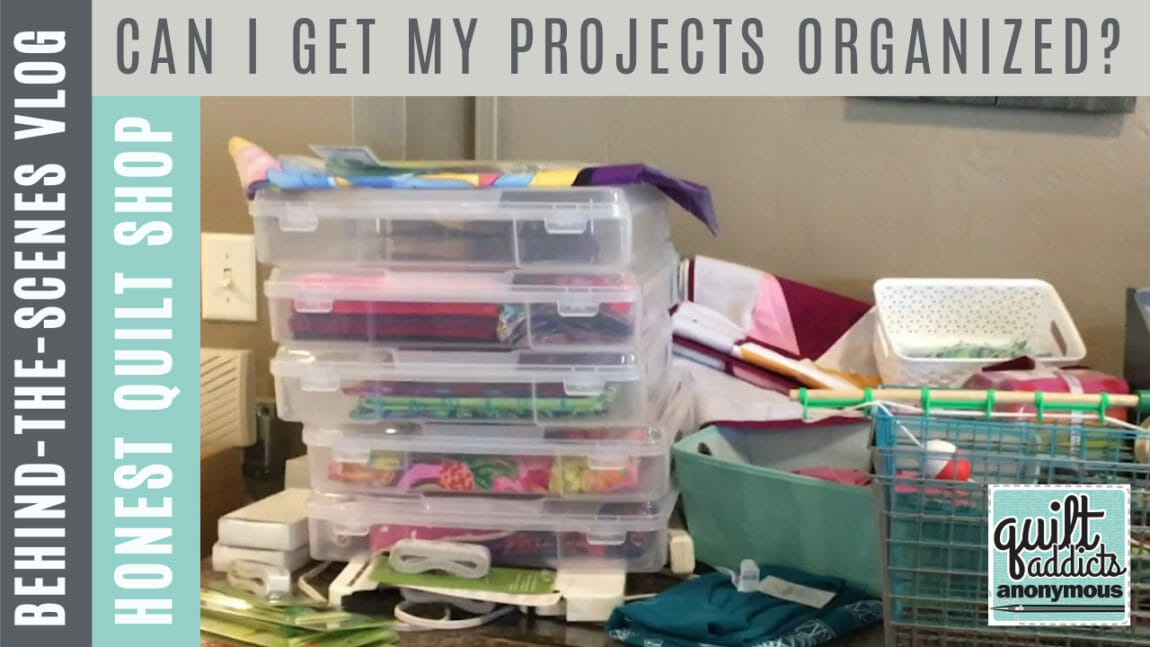
This is such a lovely gown for a very pretty little girl. The gown will be a lovely and treasured item for your grandchildren.
Love the baptismal gown! I am working on this very same pattern and I am having a difficult time with the back slash opening on the back of the skirt.
I was wondering if you have any tips that would help. Thanks!
Donna
I had trouble there too. I found this video really helpful at explaining the technique. http://youtu.be/Fsm7CAvzeZg